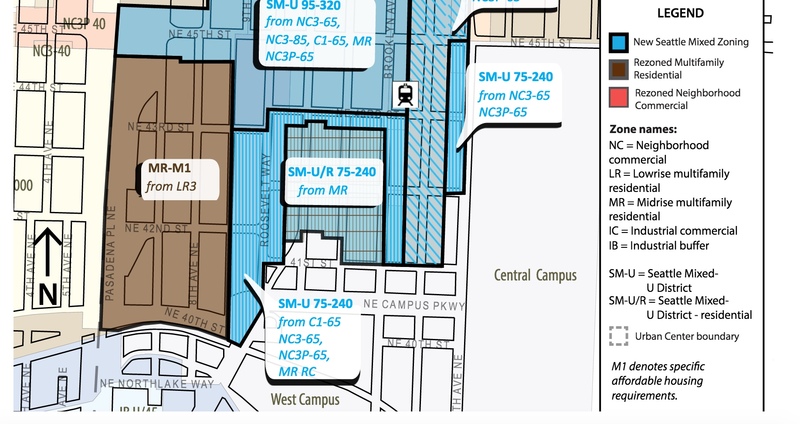Site Report 4 (final)

Zoning amendments affect on affordable housing. U DISTRICT URBAN DESIGN Final recommendations: zoning, development standards, affordable housing requirements, and amenities

Percentage of Renter Occupied Housing. U.S. Census Bureau Decennnial Census 100% Count data 2010.

Seattle Office Of Planning And Community Development - Block 9 rezone - Midrise Multifamily
My block between 7th and 8th avenue north east and north east 42nd and 43rd St has remained residential throughout its whole life. It shows obvious signs of housing that has been there for a long time as well as newer more modern apartment buildings meant to future proof the masses moving to Seattle. Because of my block’s relatively close position to the University of Washington’s West Campus housing, I expect that the recently passed zoning laws will continue the expansion seen there. The city of Seattle has already seen a large change in permanent residents to people looking to rent. In 2010 for example, according to the U.S. Census Bureau Decennnial Census 100% Count data, an astounding 82.4% of occupied housing units were renter occupied. This is a common characteristic of growing large urban cities.
As cities grow, they must accommodate more and more affordable housing because of the diverse range of people living within them. The proposal made to amend the current zoning intends to increase the number of affordable homes in the University District by six to nine hundred. The University District has never before been known as the central part of the city, but as Seattle grows and people continue to move here, the central part of the city will continue to expand.
As seen in the third map uploaded with this site report, you can see that my block is encompassed by the midrise multi-family zone. But not only that, it is within a zone that must provide housing at a certain affordable rate. I believe this is not only because of the more and more commercial space moving where workers need to live, but students as well.
The University of Washington has already claimed its stake on main campus, leaving only the residential blocks for large development. My block in particular is going to be on the forefront of this development as it has already begun with apartment buildings neighboring smaller more run down single family units. And recently as the before mentioned proposal was approved to change the zoning of the University district, it is even more clear that this smaller, less commercialized part of Seattle will not last for long.
